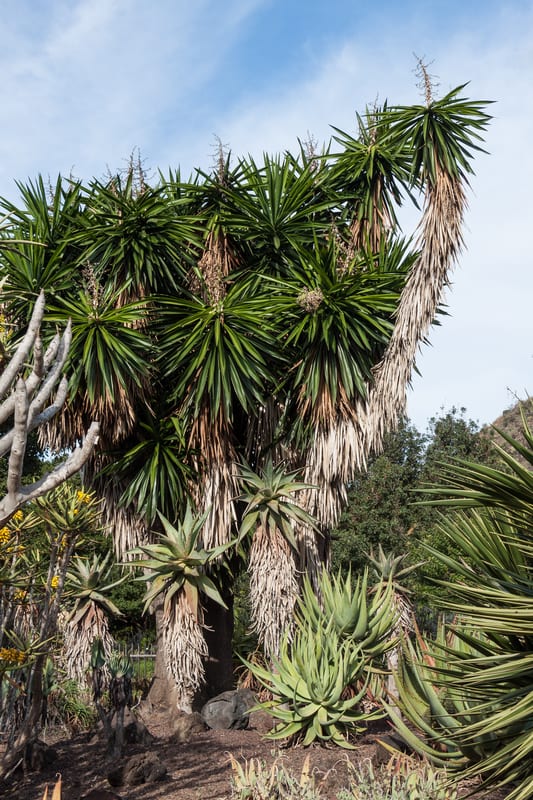
🌿 Morphology
🌞 Growing conditions
🌍 Origin and family
🌾 Uses
Warning: Despite the care taken in writing this sheet, it is essential to cross-reference sources before using or consuming any plant. When in doubt, consult a qualified professional
Permaculture uses
Young flower stalks and petals are edible when cooked; must be boiled to remove saponins. The fibrous leaves can be used for making rope or basketry. It provides habitat and shelter for beneficial insects. It can be used as a living fence or windbreak in arid or semi-arid environments. Can be used for erosion control.
Permapeople description
Yucca gigantea, also known as Spineless Yucca or Giant Yucca, is a yucca species native to Mexico and Central America. It is cultivated as an ornamental plant and features a thick trunk and clusters of sword-shaped leaves.
Botanical description
Yucca gigantea is an evergreen tree-like succulent growing up to 30 feet tall. It has a thick, single or multi-trunked stem. The leaves are sword-shaped, spineless or nearly spineless, blue-green, and grow in a rosette at the top of the trunk. The flowers are creamy white, bell-shaped, and borne on large, branched panicles. The fruit is a fleshy capsule. It thrives in full sun and well-drained soil. It is native to Mexico and Central America.
Companion planting
Yucca gigantea generally thrives in isolation or with other drought-tolerant species. Avoid planting near plants that require frequent watering or rich, moist soil. Can be planted alongside agaves, cacti, and other succulents. Its strong upright form can provide support for vining plants, though competition for resources should be considered.
Propagation methods
Propagation is typically done by seed, stem cuttings, or offsets (pups) that grow from the base of the plant. Seed propagation requires scarification and soaking. Stem cuttings should be allowed to callous over before planting. Offsets can be carefully removed and replanted.
History and traditions
Native peoples in Central America have traditionally used the yucca plant for food, fiber, and medicine. The flowers and young shoots are eaten, and the leaves are used for making rope, mats, and baskets. The roots have also been used medicinally. In some cultures, the plant is considered a symbol of resilience and endurance.
Usage calendar
Flowering occurs primarily in late summer to fall. Harvesting flowers for consumption should be done just before they fully open. Planting is best done in spring or early summer. Pruning is typically limited to removing dead or damaged leaves and flower stalks.
